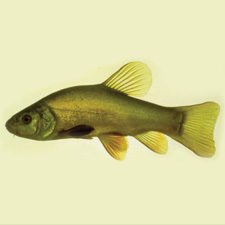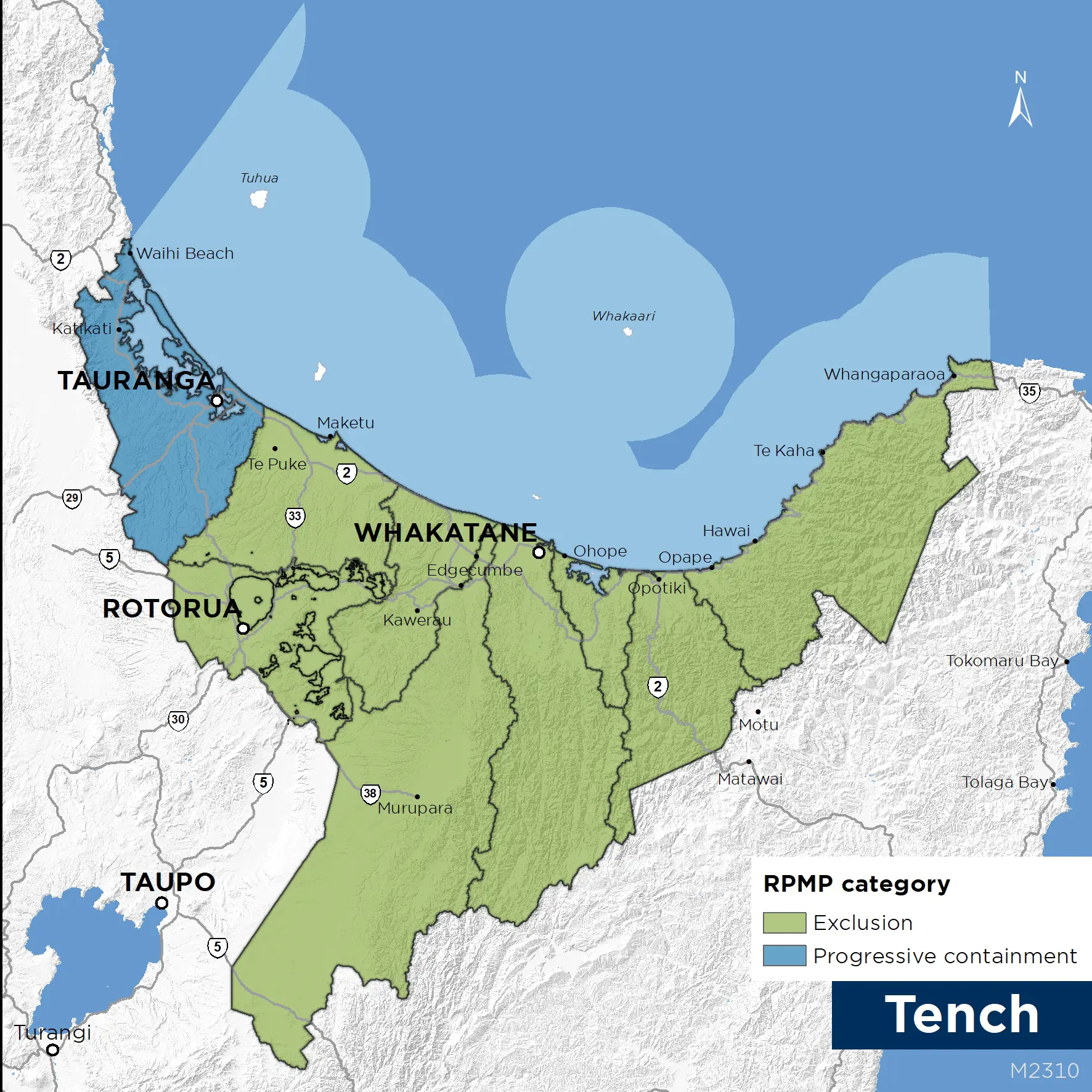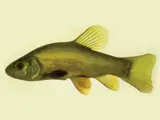 Tench
Tench
Common name: Tench
Botanical name: Tinca tinca
Management programme: Exclusion and Progressive Containment
Where are they originally from?
Tench are native to Europe and were introduced to New Zealand in 1867 as a sports fish. They can live up to 20 years in the wild and are also known as doctor fish due to a slime produced by their skin. It is said that this slime can cure sick fish when they rub up against the Tench.
Why are they a pest?
- They are carnivorous bottom dwellers posing a risk to native crustaceans, molluscs, and insect larvae.
- They are an aggressive fish which out-compete other species.
- Tench disturb the sediment on the base of waterbodies.
Where are they found?
- They prefer slow or still water environments, particularly lakes and lowland rivers and are tolerant of both low oxygen and brackish environments.
- Tench have the potential to swim between connected waterways. They may also be deliberately spread into new waterways for fishing purposes.
- They are widespread in Auckland and Northland, known populations also exist in Waikato, Wellington, Nelson, Canterbury, and Oamaru.
- Tench is currently not known to be found in the Bay of Plenty although there have been historical and recent sightings which have not been substantiated.
What do they look like?
- Tench are a medium size, stocky fish, light to deep olive green in colour with brick orange eyes, small scales, rounded fins, and a single pair of small barbells at the mouth. It uses these barbells, which are short sensory organs, to hunt for its prey.
- Adults in New Zealand are around 30-40cm long and average around 2kg, but can reach up to 4kg.
- Males are generally smaller and have longer, fatter pelvic fins.
- They are prolific breeders. Spawning occurs in summer when up to 300,000 eggs can be produced per female.
- Tench have no teeth, but have a relatively large mouth, and are thought to feed using suction to ingest their prey.
What are the rules?
Exclusion
Tench is an Exclusion pest in parts of the region, this means that it is not yet established in this area of the Bay of Plenty. Bay of Plenty Regional Council is responsible for managing new incursions into the region.
Progressive Containment
Progressive Containment species are pests which the Council aims to prevent from spreading, reduce the distribution, or eradicate within parts of the region over time. Landowners or occupiers are responsible for the control of Progressive Containment species on their property. Council may enforce the control of these pest species.
How do you get rid of them?
Controlling pest fish is very difficult and should not be attempted without expert advice. If you think you have found Tench, please contact the Bay of Plenty Regional Council.
Images


